
St Kilda is an isolated archipelago situated 64 kilometres (40 mi) west-northwest of North Uist in the North Atlantic Ocean. It contains the westernmost islands of the Outer Hebrides of Scotland. The largest island is Hirta, whose sea cliffs are the highest in the United Kingdom; three other islands were also used for grazing and seabird hunting. The islands are administratively a part of the Comhairle nan Eilean Siar local authority area.

Hirta is the largest island in the St Kilda archipelago, on the western edge of Scotland. The names Hiort and Hirta have also been applied to the entire archipelago. Now without a permanent resident population, the island had nearly all of St Kilda's population of about 180 residents in the late 17th century and 112 in 1851. It was abandoned in 1930 when the last 36 remaining inhabitants were evacuated to Lochaline on the mainland.
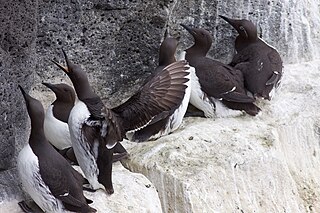
Guillemot is the common name for several species of seabird in the Alcidae or auk family. In British use, the term comprises two genera: Uria and Cepphus. In North America the Uria species are called murres and only the Cepphus species are called "guillemots". This word of French origin derives from a form of the name William, cf. French: Guillaume.

The Soay sheep is a breed of domestic sheep descended from a population of feral sheep on the 100-hectare (250-acre) island of Soay in the St Kilda Archipelago, about 65 kilometres (40 mi) from the Western Isles of Scotland. It is one of the Northern European short-tailed sheep breeds.
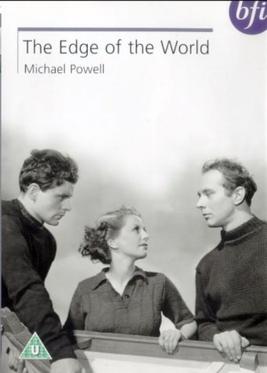
The Edge of the World is a 1937 British film directed by Michael Powell, loosely based on the evacuation of the Scottish archipelago of St Kilda. It was Powell's first major project. The title is a reference to the expression ultima Thule, coined by Virgil.
Soay is an uninhabited islet in the St Kilda archipelago, Scotland. The name is from Old Norse Seyðoy, meaning 'island of sheep'. The island is part of the St Kilda World Heritage Site and home to a primitive breed of sheep. It is the westernmost point in the United Kingdom, if disputed Rockall is excluded.

Stac Lee is a sea stack in the St Kilda group off the west coast of Scotland. An island Marilyn, it is home to part of the world's largest colony of northern gannet.

Stac an Armin, based on the proper Scottish Gaelic spelling, is a sea stack in the St Kilda archipelago. It is 196 metres (643 ft.) tall, qualifying it as a Marilyn. It is the highest sea stack in Scotland and the British Isles.
St Kilda was continuously inhabited for two millennia or more, from the Bronze Age to the 20th century.
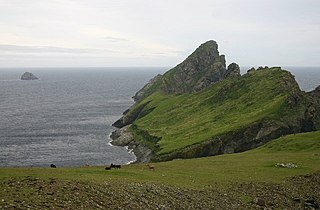
Dùn is an island in St Kilda, Scotland. It is nearly 1 mile long. Its name simply means "fort" in Scottish Gaelic, but the fort itself has been lost – old maps show it on Gob an Dùin, which is at the seaward end.

Stac Biorach is a sea stack, 73 metres tall, situated between Hirta and Soay in the St Kilda archipelago of Scotland. It lies west of Stac Shoaigh (61 metres).

The Hebrides were settled early on in the settlement of the British Isles, perhaps as early as the Mesolithic era, around 8500–8250 BC, after the climatic conditions improved enough to sustain human settlement. There are examples of structures possibly dating from up to 3000 BC, the finest example being the standing stones at Callanish, but some archaeologists date the site as Bronze Age. Little is known of the people who settled in the Hebrides but they were likely of the same Celtic stock that had settled in the rest of Scotland. Settlements at Northton, Harris, have both Beaker & Neolithic dwelling houses, the oldest in the Western Isles, attesting to the settlement.

John Sands (1826–1900) of Ormiston was a Scottish freelance journalist and artist who also had an interest in archaeology and folk customs, especially the way of life on Scottish islands. He spent almost a year on St Kilda and lived on several other remote islands.

Haskeir, also known as Great Haskeir is a remote, exposed and uninhabited island in the Outer Hebrides of Scotland. It lies 13 kilometres west-northwest of North Uist. 1 km southwest lie the skerries of Haskeir Eagach, made up of a colonnade of five rock stacks, and 40 km (25 mi) northwest is St Kilda.
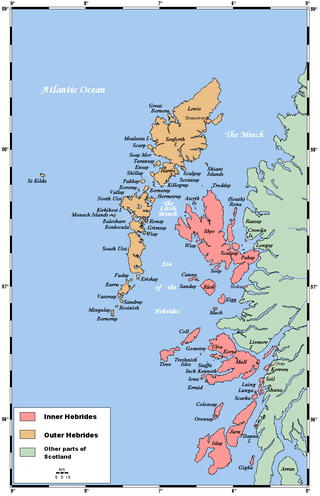
The flora and fauna of the Outer Hebrides in north west Scotland comprises a unique and diverse ecosystem. A long archipelago, set on the eastern shores of the Atlantic Ocean, it attracts a wide variety of seabirds, and thanks to the Gulf Stream a climate more mild than might be expected at this latitude. Because it is on the Gulf Stream, it also occasionally gets exotic visitors.
Boreray is an uninhabited island in the St Kilda archipelago in the North Atlantic.
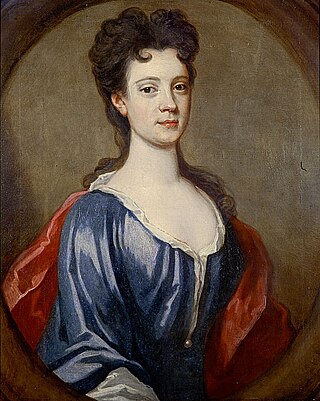
Rachel Chiesley, usually known as Lady Grange, was the wife of Lord Grange, a Scottish lawyer with Jacobite sympathies. After 25 years of marriage and nine children, the Granges separated acrimoniously. When Lady Grange produced letters that she claimed were evidence of his treasonable plottings against the Hanoverian government in London, her husband had her kidnapped in 1732. She was incarcerated in various remote locations on the western seaboard of Scotland, including the Monach Isles, Skye and St Kilda.

The Monach Islands, also known as Heisker, are an island group west of North Uist in the Outer Hebrides of Scotland. The islands are not to be confused with Hyskeir in the Inner Hebrides, or Haskeir which is also off North Uist and visible from the group.

John Norman Heathcote was a British author, watercolourist and photographer, who wrote the book St Kilda, published in 1900, about the Scottish Hebridean archipelago of St Kilda.






















